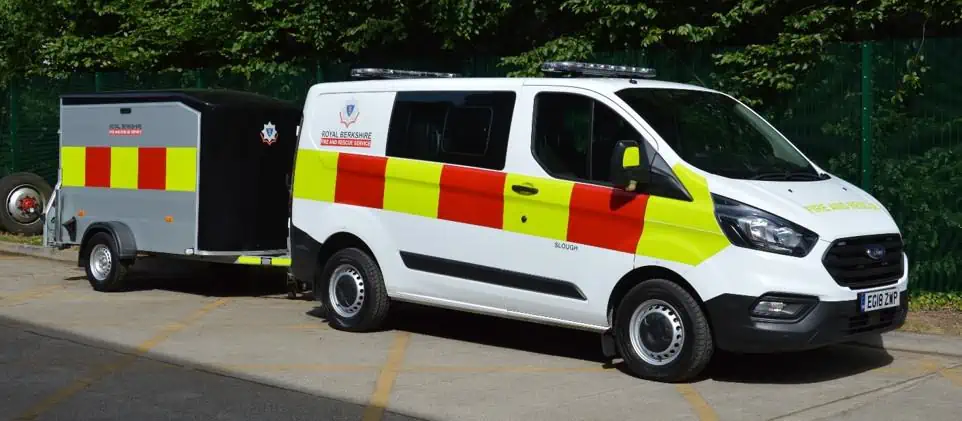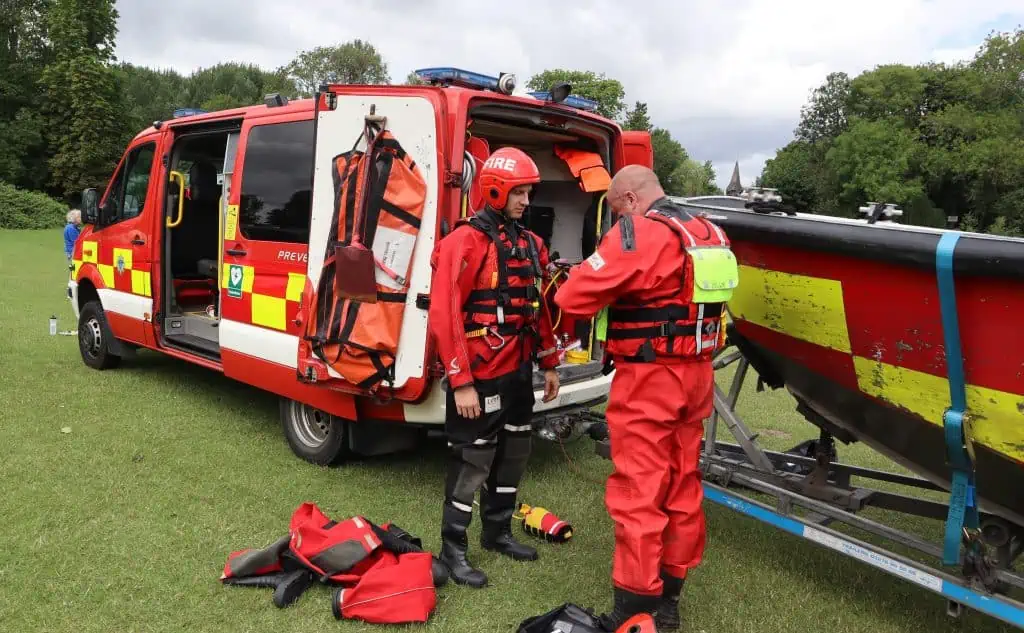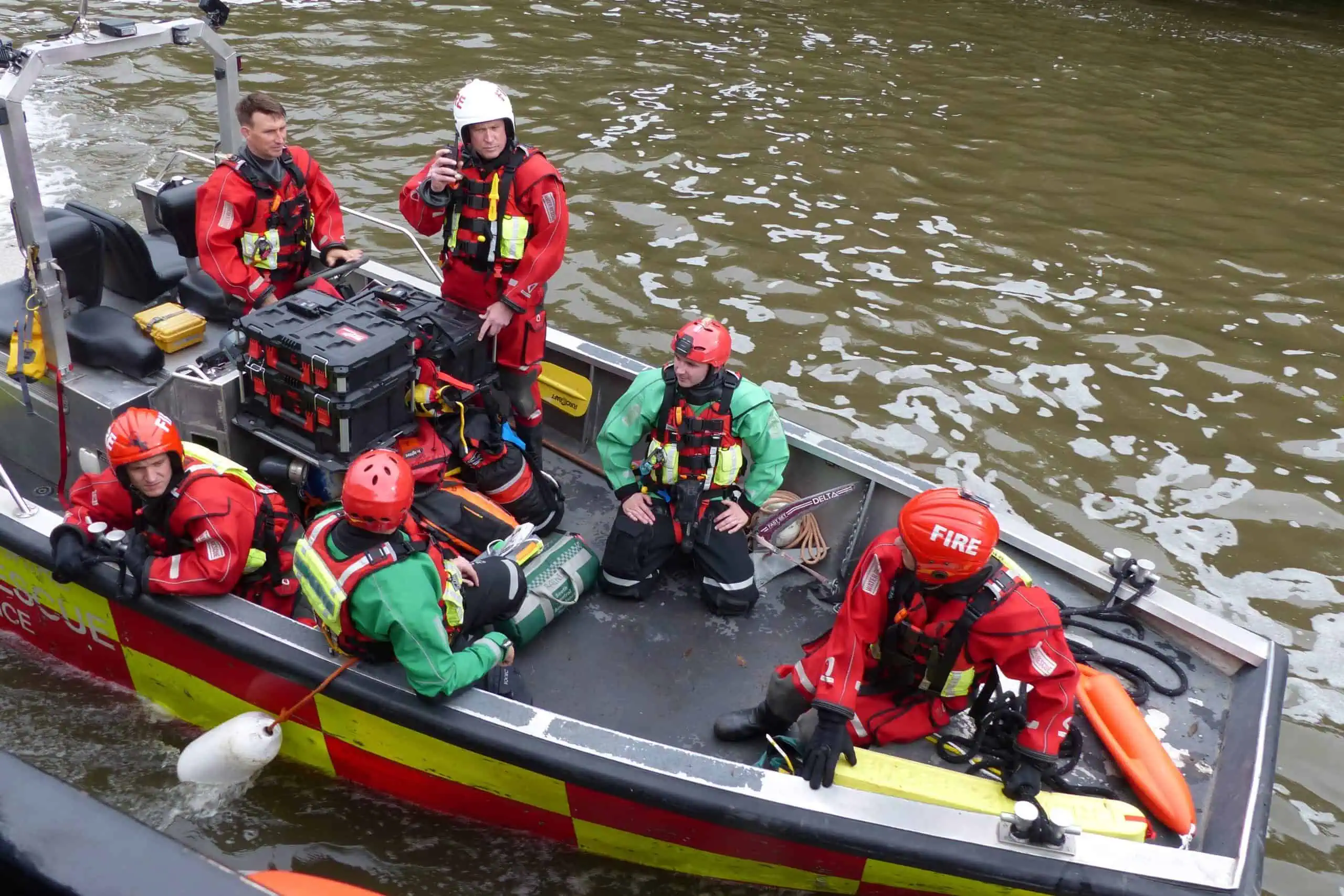Water Safety
Read our advice on how to react and respond in an emergency, as well as our top tips for spending time in and around water safely.
- Cold water shock and in an emergency
- Enjoying the water safely
- Our Water Rescue Capabilities
- Useful resources
Cold water shock and in an emergency
Cold water shock
Cold water shock refers to the reaction of the body to entering cold water. Cold water shock can have a dramatic effect on your body, such as causing you to breathe in water, make your muscles weaken, and can even cause your heart to go into abnormal rhythms, ultimately resulting in death.
Anything below 15°C is defined as cold water so there is a significant risk of it occurring when entering the water at any time of year, even in the summer. Average UK and Ireland sea temperatures are just 12°C. Rivers such as the Thames are colder.
If you find yourself in trouble in the water
If you find yourself in trouble in the water, float to live. Do not panic, float on your back until the effects of cold water shock pass. When the cold water shock has passed, swim to the edge or call for help.
If someone else is in trouble in the water
If someone else falls into the water, call 999 straight away and ask to speak to the fire service and ambulance.
Never enter the water to try and save someone, even if you are a strong swimmer. Shout to the person in the water ‘swim to me;’ The water can be disorientating, and this can give them a focus. Depending on where you are there might be lifebelts or throw bags – use them. If they are attached to a rope, make sure you have secured or are holding the end of the rope so you can pull them in.
Enjoying the water safely
Spending time in the water
If you are thinking of entering the water, consider your exit point, and any emergency exits, before you get in.
Do not jump into open water, often referred to as ‘tombstoning’, as this can cause potentially fatal cold water shock, even on the warmest day. Think twice before swimming in open water such as rivers or lakes. You have no idea what’s beneath the surface, there could be unseen currents and reeds, which could pull you under.
Open water swimming and paddle boarding
Swimming in a group or better still at an organised event is a safer way of starting open water swimming, never swim alone. Remember to start slowly by building up strength and experience gradually. You will develop some resistance to cold water but cold water shock always remains a danger, get out before you get cold and make sure you have warm clothes to put on.
If you are going to swim in canals, locks or urban rivers; flowing water can be extremely powerful, and levels can rise several feet in minutes even if it is not raining where you are. Bear in mind that moving water will rob you of heat 250 times more quickly than still water.
If you jump in, you never know what might be hidden just below the surface, if the water is very cold sudden immersion can cause a gasp reflex causing you to inhale water on contact.
When you first start open water swimming make sure you are not alone in case of an emergency or the unexpected cold water shock for the first time of going into the water. Wear a brightly coloured swim hat and consider a safety buoy to make yourself more visible.
Do a risk assessment on the water for the dangers present, it pays to know any dangers before you go swimming. Always consider your exit point, and any emergency exits, before you get in the water. Make sure you feel fit and well before swimming.
Spending time near the water
When running or walking next to the water, stay clear of the edges. Riverbanks and cliff edges may be unstable and give way – particularly after bad weather. Look out for trip or slip hazards – pay attention to your footing and avoid walking or running next to water if levels are high.
If you are walking the dog and they end up in the water, do not go in after them.
Do not enter the water if you have been drinking and avoid walking routes near water if you are under the influence of alcohol. Alcohol affects your ability to get yourself out of trouble, so find another route home instead. Look out for your friends and make sure they get home safely.
Our Water Rescue Capabilities
Royal Berkshire Fire and Rescue Service has two specialist Water Rescue Units to respond to emergencies on the county’s waterways and lakes. One team is based at Caversham Road Fire Station whilst the other, established in 2023, is based at Slough Fire Station.
The Water Rescue Unit at Caversham Road Fire Station has been there for many years and was joined on site by the Animal Rescue Unit in 2010. The units merged in May 2014 and share their equipment in a modified Mercedes van.

Firefighters use specialist dry suits and helmets and adjust their methods based on the risk level of each incident. Crew members may choose to swim out or offer rescue lines to people or use dinghies, ice paths or sledges in more dangerous waters.

If there are any incidents on the River Thames, crews can use the unit’s 164-horsepower Workstar jet boat. The machine is believed to be the largest in-shore capacity boat in the country – measuring 7.5 metres in length. Fast-flowing waters can be safely tackled by the boat, which is highly manoeuvrable and has a platform at its stern for pulling casualties from the river.
The jet boat can hold six adults as well as the crew. Its speed is restricted on the River Thames due to the ‘wash’ it can create behind.

Useful resources
More tips and advice
- Further water safety advice is available on the Royal Life Saving Society (RLSS) Water Safety Advice website page;
- Read more about cold water shock on the RNLI Cold Water Shock – Water Safety Tips website page;
- Further information on winter water safety is available on the RLSS Winter Water Safety website page;
- Watch this RNLI: Float to Live video so you’re prepared if you unexpectedly find yourself in water;
- The British Black Swimming Association is a non-profit organisation, set up to diversify the world of aquatics through education, advocacy, support and research;
- For more advice on staying safe if under the influence of alcohol, visit the RLSS website to read about the Don’t Drink and Drown campaign;
- Stay safe on the beach with this RNLI Beach Safety advice;
- Visit the Outdoor Swimming Society website to find out more about outdoor swimming;
- The RLSS website has more Open Water Safety Tips;
- The RNLI website has more Open Water Swimming Advice;
- If you want to join an outdoor swim group, visit the Wild Swim Groups page on the Outdoor Swimming Society website.
Resources for children
- Visit the Canal and River Trust website for free water safety resources for kids;
- Find free RNLI Free Water Safety Workshops.